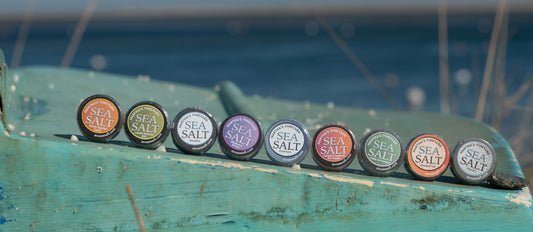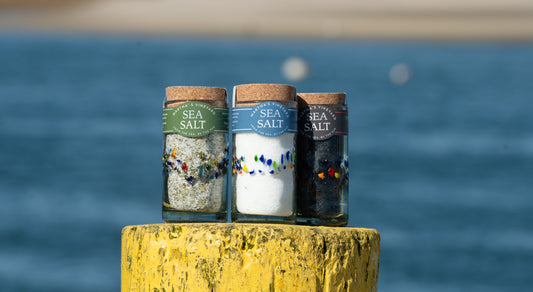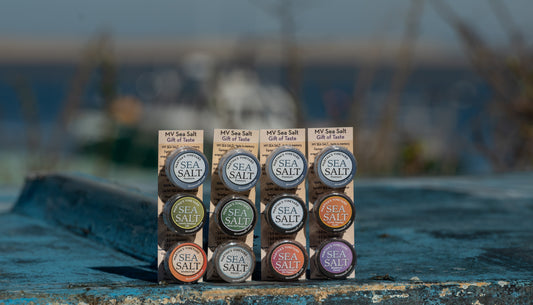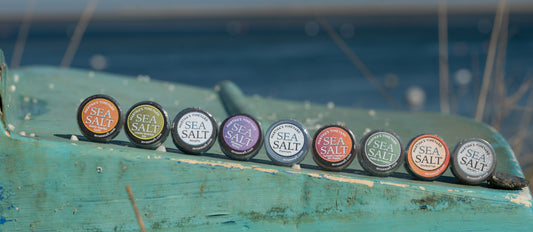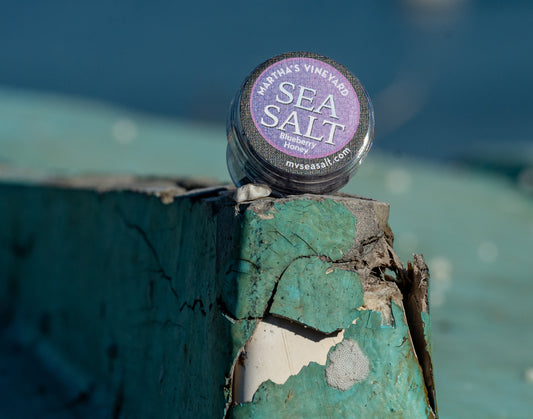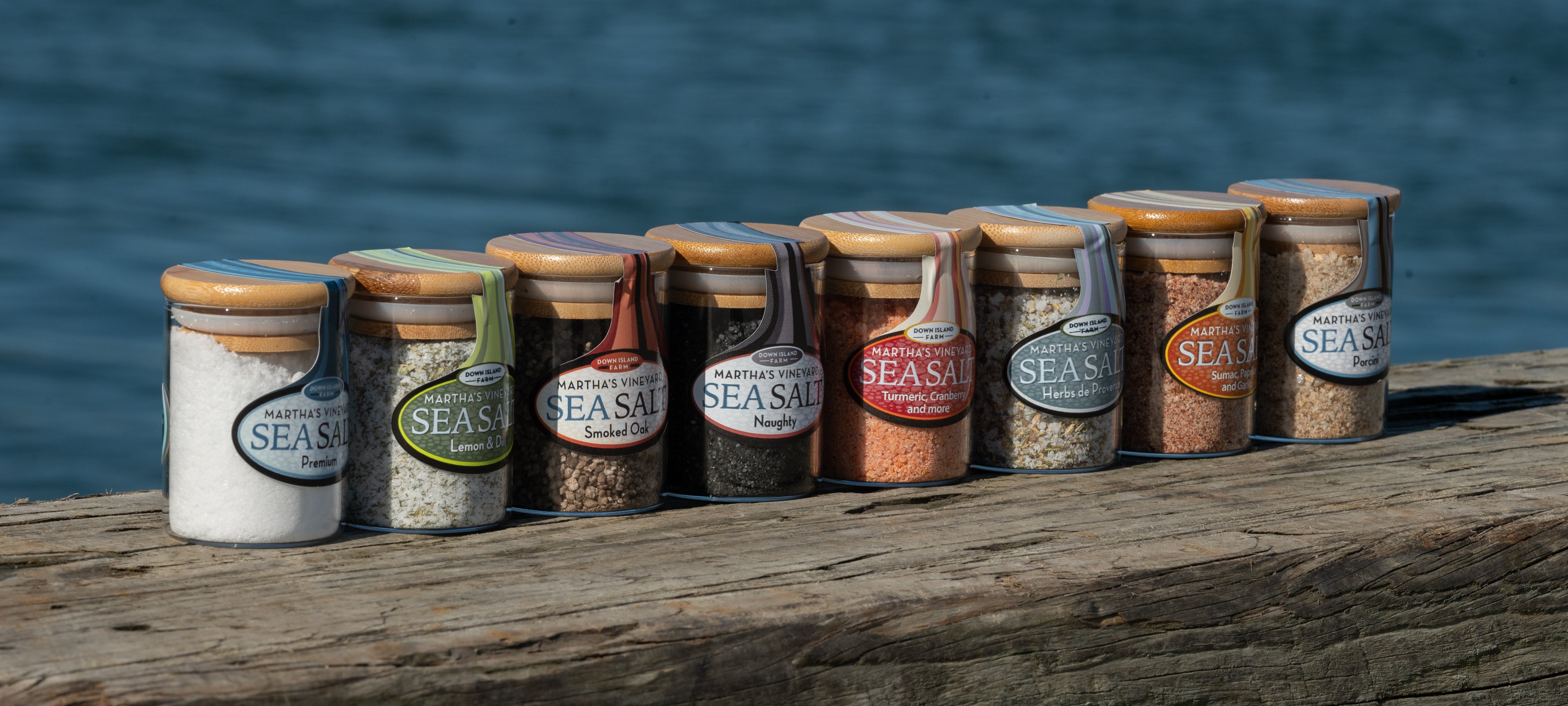
MV Sea Salt is more moist and brinier than most the sea salts. It tastes like Martha’s Vineyard. Really. It does.
Sea + Sun = Salt
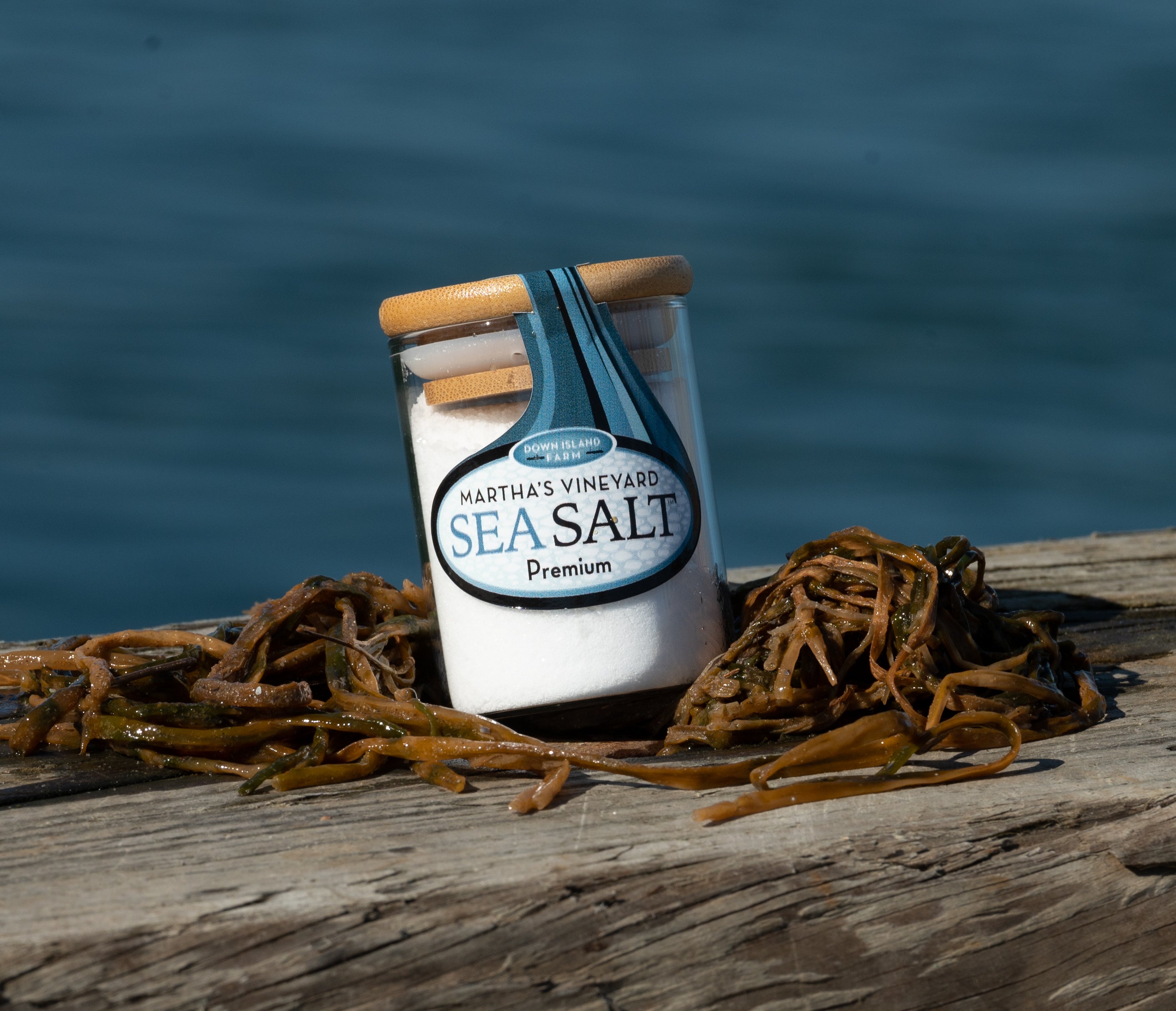
MV Sea Salt is a Raw Salt
- “Raw” = not dried at more than 115F degrees.
- Sun dried sea water which is, we admit, slower to yield a batch but we think you are worth it. And the planet is, too.
- Our raw sea salt is sustainable and delicious, and from the sea - a renewable resource. Mostly, we hear YOU love it because it is delicious.
- Lastly, does it makes sense to you for we humans to consume masses of carbon to boil or bake the ocean to produce sea salt? Plus, those processes change the flavor, they really do.
Contains Zero Yucky Stuff
MV Sea Salt is the best of the sea. It is not amended with
-anti-caking powders,
-drying agents,
- bleach,
- iodine,
- bleach,
- fluoride... Yuck.
Open Atlantic Ocean water is filtered at 50 microns to remove sand, shells, small sea creatures before being set out in large, covered ponds to dry. When the water has evaporated the resulting sea salt is scooped and packaged.
What Trace Minerals are in MV Sea Salt?
MV Sea Salt has been tested for trace mineral content and surprisingly, although it shouldn’t really be surprising, the results have varied depending on the season. We surmise the difference have to do with migrating sea life and the flow of the ocean, itself.
Herein, the latest findings:
Chloride 60.5 % (wb) Copper ND mg/100g Iron 0.6 mg/100g Magnesium 2570 mg/100g Phosphorous 1.5 mg/100g Potassium 828 mg/100g Selenium 6.9 mg/100 Zinc ND mg/100
Is MV Sea Salt Organic?
Many ask, “Is Martha’s Vineyard Sea Salt Certified Organic?” and the answer is that the United States Department of Agriculture (USDA) classifies salt as a mineral and not an agricultural product, which means there is not yet an organic certification available for salt and salt products in the United States.
Ergo, any sea salt producer claiming that their product is Certified Organic deserves a talking to.
Flavorful & Sustainably Produced
-
Traveler Nine Pack
Regular price $50.00 USDRegular price -
SEAGlass Jar IS BACK
Regular price $50.00 USDRegular price -
Traveler Three Pack
Regular price $20.00 USDRegular price

This salt is the most fantastic salt I have ever used. Evaporated from Atlantic Ocean saltwater, it is genuinely locally sourced, and there is a flavor for every meal. Make sure you have some of this tasty salt to bring out the best in every meal! My favorite is the smoked version, but they are all delicious.
- Carole Soule

Used Lemon Dill as a rub on fresh cod. Put on BBQ, one turn, added fresh lemon juice. FABULOUS!
- Jean H.
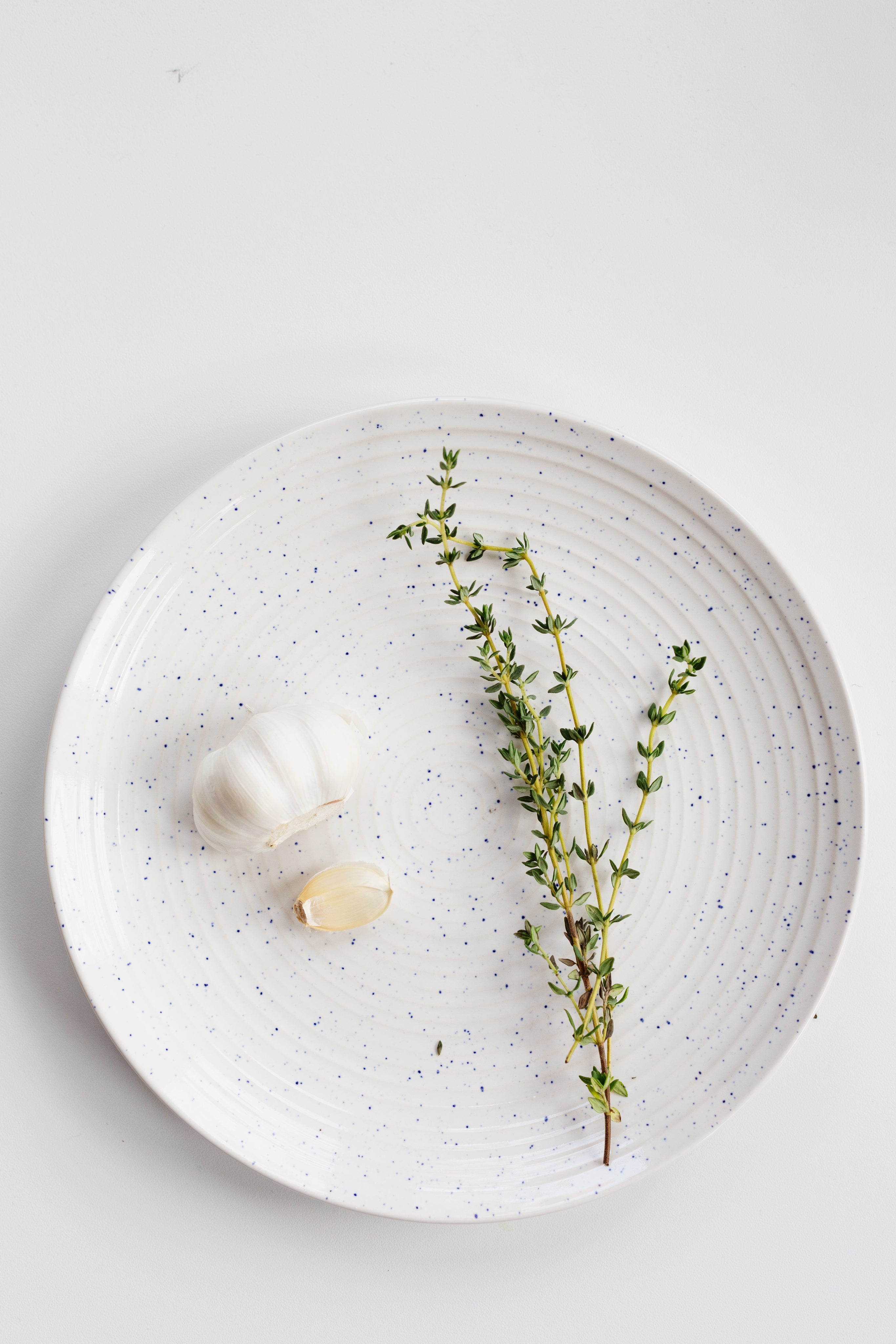
We love Martha's Vineyard Porcini salt! After receiving a bottle over the holidays, we sprinkle a bit onto almost everything now... salad, chicken, seafood, bread, vegetables, fresh mozzarella, etc. The layers of flavor it adds & texture of the salt is absolutely fabulous.
- J. Underwood
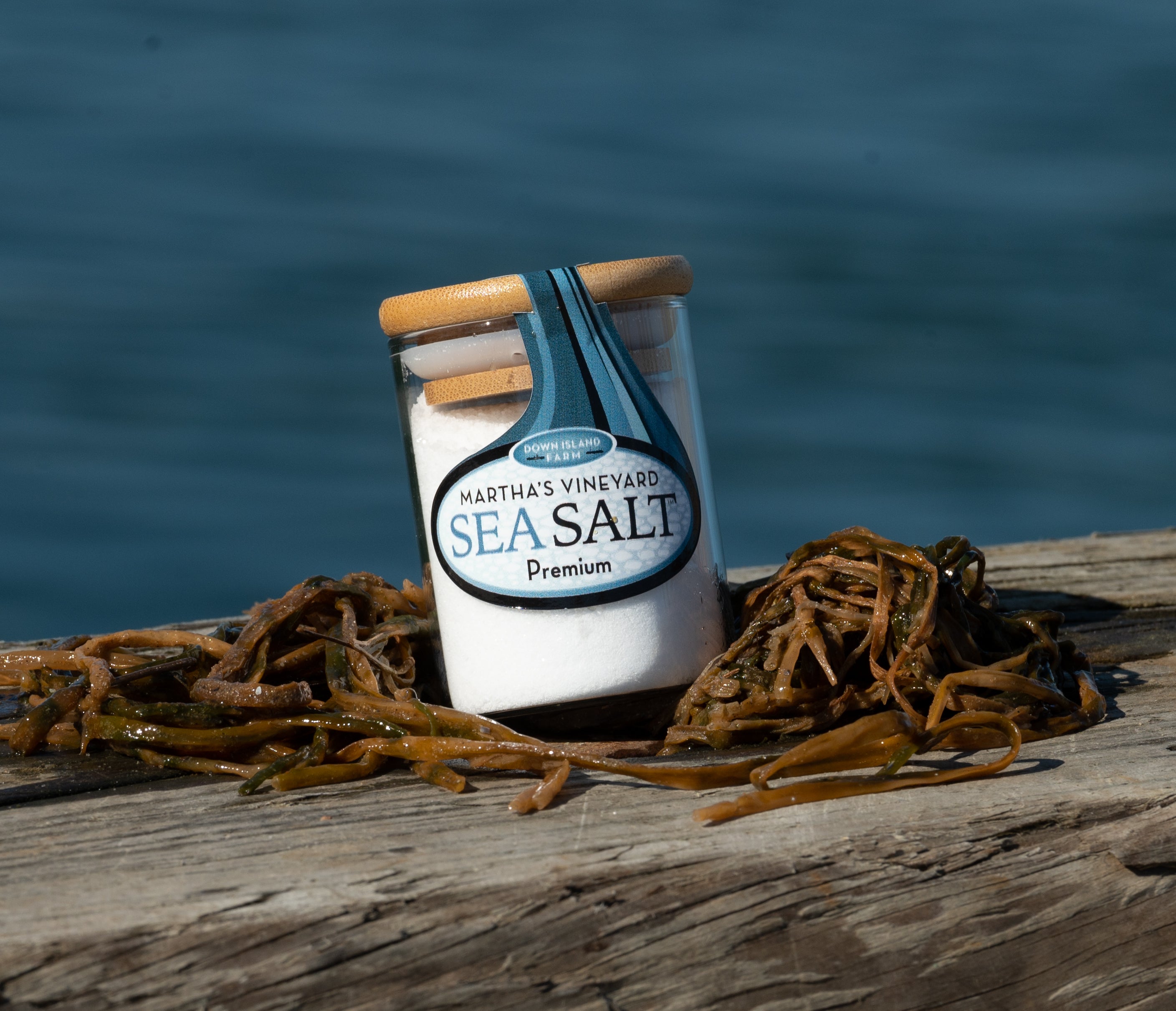
Summer in a Jar.
- J. Raia, Chef
Partner with Us
-

Restaurant Partner Info
Call for Password.All your effort, all that goodness,
topped with the best quality sea salt
you can find. -

Shower & Wedding Options
A PDF awaits you.Give your guests
the authentic taste of
the island you love. -



